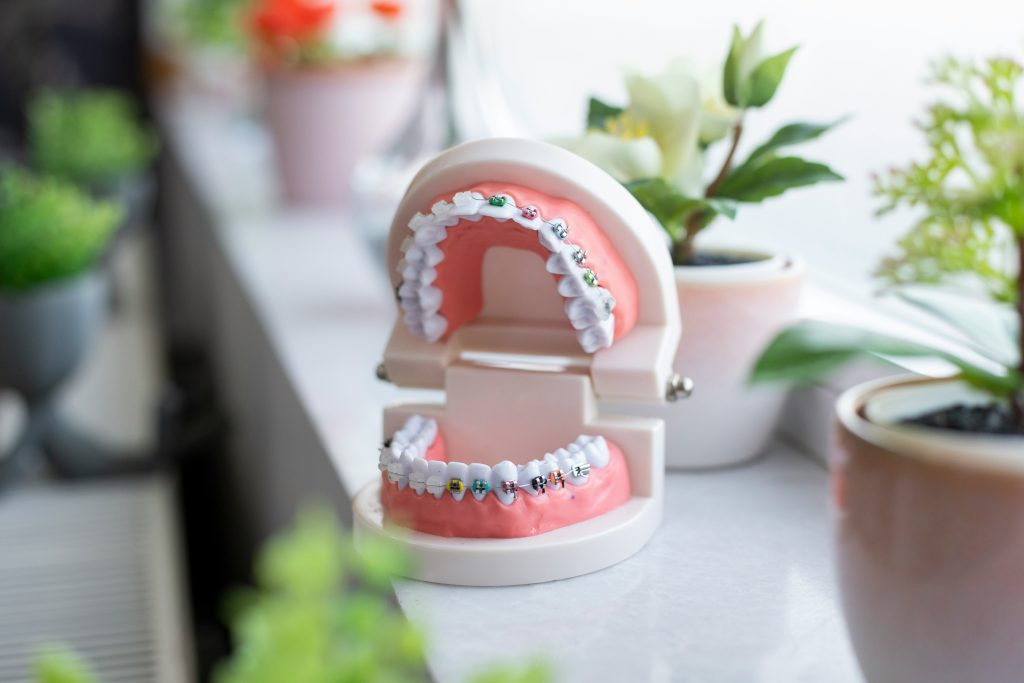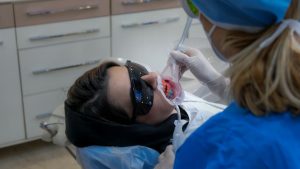Gum disease doesn’t happen overnight—but once it starts, it can quietly damage your oral health in ways you might not notice until it’s too late. Often beginning as mild gingival inflammation, it can progress into serious issues like receding gums, persistent bad breath, and even tooth loss. The good news? Gum disease is largely preventable with a few simple habits. In this article, we’ll walk you through the practical, science-backed daily routines that help keep your gums healthy for the long term. Whether you’re already dealing with sensitive gums or simply want to avoid costly periodontal treatments in the future, these tips are easy to follow—and proven to work. So, are you doing enough each day to protect your gums?
What Is Gum Disease and Why Should You Care?
Gum disease is one of the most common yet overlooked oral health conditions affecting both adults and teens worldwide. Also known medically as periodontal disease, it refers to the infection and inflammation of the tissues that surround and support your teeth. At its earliest stage, it often presents as gingival inflammation, which can progress into more serious forms of gum disease like periodontitis if left untreated. According to the Ministry of Health Singapore, nearly 8 in 10 adults above 35 years old show signs of some level of gum disease as of 2025.
The condition usually begins with the accumulation of dental plaque—a sticky biofilm of bacteria—around the gum line. Without proper oral hygiene, this plaque hardens into tartar, leading to irritation and inflammation of the gums. This is when gingivitis sets in. At this stage, you may notice symptoms like bleeding gums while brushing, persistent bad breath, and swollen or tender gums. While gingivitis is reversible with proper care, it can evolve into periodontitis or even pyorrhea disease—a severe infection that causes gum recession, tooth mobility, and eventual tooth loss.
Types and Stages of Gum Disease
Gum disease progresses in stages, each with escalating risks. Understanding these stages can help you intervene early and prevent irreversible damage.
| Stage | Description | Common Symptoms | Is It Reversible? |
|---|---|---|---|
| Gingivitis | Mild inflammation of the gums caused by plaque buildup | Bleeding when brushing, red or swollen gums | Yes |
| Early Periodontitis | Gums begin to pull away from teeth; bone loss starts | Bad breath, gum sensitivity, mild bone loss | Partially |
| Moderate to Advanced Periodontitis | Severe bone and tissue loss; risk of tooth loss | Loose teeth, gum recession, pus, severe bad breath | No |
Source: Singapore Dental Health Foundation, 2025
Why Gum Disease Matters to Your Overall Health
Beyond oral health, gum disease has been linked to a range of systemic conditions. Studies published in the Journal of Clinical Periodontology (2025) show a strong correlation between chronic periodontitis and an increased risk of heart disease, diabetes, and even Alzheimer’s. The inflammation caused by oral bacteria doesn’t stay confined to the mouth—it can enter the bloodstream and contribute to broader health complications.
In Singapore, where an ageing population is becoming a growing concern, preventing chronic diseases—including those originating in the mouth—has become a national health priority. Maintaining gum health is no longer just about preserving your smile; it’s a foundational part of your long-term wellness strategy.
Key Risk Factors in Singapore
Some individuals are more prone to gum disease due to factors such as smoking, hormonal changes, diabetes, and even certain medications. In Singapore, the Health Promotion Board reports that smokers are 2 to 4 times more likely to develop gum disease compared to non-smokers (HPB, 2025). Additionally, cultural dietary patterns high in refined sugars and carbohydrates can accelerate plaque accumulation.
Early Detection Saves Smiles
The good news? Gum disease is preventable and manageable—especially when detected early. Regular dental checkups, effective oral hygiene, and being aware of subtle warning signs can drastically reduce your risk. If you notice bleeding when brushing, tenderness, or persistent bad breath, consult a licensed dentist in Singapore as soon as possible. Early action can mean the difference between a reversible case of gingivitis and a lifelong struggle with pyorrhea disease.
Now that you understand what gum disease is and why it matters, let’s move on to the simple daily habits that can help you prevent it—starting with how you brush your teeth.
1. Brush the Right Way—Not Just Twice a Day to Prevent Gum Disease
Brushing your teeth twice a day is widely accepted as the gold standard for oral hygiene. However, when it comes to preventing gum disease, how you brush matters just as much—if not more—than how often. Improper brushing techniques can leave behind harmful plaque and bacteria that irritate your gums, eventually leading to red puffy gums, teeth recession, and chronic inflammation.
Why Technique Matters More Than Frequency
Many people in Singapore follow a strict brushing routine, but studies show that over 60% are using incorrect techniques, such as brushing too aggressively or not covering all areas of the mouth (Health Promotion Board Singapore, 2025). Aggressive brushing with hard-bristled toothbrushes can contribute to teeth recession, exposing sensitive root surfaces and making gums more vulnerable to bacterial infections.
The goal of brushing is to gently remove plaque without damaging the soft tissues. To do this effectively, dentists recommend using a soft-bristled toothbrush held at a 45-degree angle to the gumline, moving in small circular motions rather than a back-and-forth scrub. Electric toothbrushes with pressure sensors can also help reduce the risk of overbrushing.
Choosing the Right Tools for Gum Health
Selecting the right toothbrush and toothpaste is essential in preventing gum disease. Here’s a comparison of commonly used tools and their impact on gum health:
| Tool | Recommended For | Impact on Gum Health |
|---|---|---|
| Manual Toothbrush (Soft) | General daily use | Effective when used properly; gentle on gums |
| Electric Toothbrush (with pressure sensor) | People prone to overbrushing or with limited dexterity | Highly effective in removing plaque; prevents overpressure |
| Hard-Bristled Toothbrush | Not recommended | May lead to red puffy gums and teeth recession |
| Toothpaste with Fluoride & Anti-Gingivitis Agents | People at risk of gum disease | Helps reduce plaque and inflammation |
Source: Singapore Dental Health Foundation, 2025
How Brushing Prevents Gum Disease at the Root Level
Consistent and correct brushing disrupts bacterial colonies at the gumline before they harden into tartar. This reduces the risk of gingivitis, the earliest stage of gum disease. Left untreated, gingivitis can lead to periodontitis, where deep pockets form between the teeth and gums, harboring more bacteria and increasing inflammation.
One common early sign is red puffy gums, often accompanied by bleeding during brushing. While many dismiss these as harmless, they are actually warning signs that the body is fighting off harmful bacteria. Ignoring them could result in teeth recession, a condition that not only affects aesthetics but also exposes the tooth roots, increasing sensitivity and the likelihood of decay.
Best Practices for Brushing in Singapore’s Climate
Singapore’s warm, humid environment can accelerate bacterial growth in the mouth, especially if you’re consuming sugary or acidic local favourites like teh tarik or kaya toast. To combat this, the Ministry of Health recommends brushing your teeth at least twice a day—ideally after breakfast and before bed. In addition, rinsing with water or chewing sugar-free gum after lunch can help reduce plaque buildup throughout the day (MOH Singapore, 2025).
For those who wear braces or retainers, using an interdental brush or water flosser in combination with regular brushing is highly effective in reaching plaque-prone areas, helping to maintain healthy gums and prevent inflammation.
Key Takeaways
- Use a soft-bristled or electric toothbrush with gentle, circular motions.
- Brush for at least 2 minutes, twice daily—especially before bedtime.
- Pay extra attention to the gumline without applying excessive pressure.
- Choose a fluoride toothpaste designed to fight gum disease.
- Adapt brushing habits to your dietary and environmental exposures in Singapore.
Brushing the right way isn’t just about avoiding cavities—it’s your first and most essential defense against gum disease. By adopting the right technique and tools, you can prevent painful symptoms like red puffy gums and long-term damage such as teeth recession. Start making these changes today, and your gums will thank you tomorrow.
2. Don’t Skip Flossing to Fight Gum Disease (Here’s How to Make It Easier)
Flossing is one of the most effective yet underutilised tools in the fight against gum disease. While brushing removes plaque from the visible surfaces of your teeth, only flossing can clean the tight spaces between teeth and under the gumline—where bacteria thrive. When these areas are neglected, plaque hardens into tartar, leading to inflammation, dental pockets, and eventually more invasive treatments like dental pocket treatment or even gingival recession treatments to save what’s left of the supporting structures.
Why Flossing Matters: The Science Behind It
According to a 2025 oral health survey by the Health Promotion Board Singapore, only 38% of adults floss daily, despite evidence showing that flossing can reduce the risk of gum disease by up to 40%. Without flossing, food debris and bacteria can accumulate and irritate the gums, especially around perio teeth—teeth already affected by periodontal issues.
Over time, this leads to the formation of dental pockets—spaces between the teeth and gums where bacteria settle and multiply. If untreated, these pockets deepen, resulting in gingival recession and bone loss, often requiring specialised intervention such as dental pocket treatment or even surgery.
Comparison of Flossing Options
Not all flossing tools are created equal. Here’s a breakdown of popular flossing aids, their benefits, and their impact on gum disease prevention:
| Flossing Tool | Recommended For | Effectiveness | Ease of Use |
|---|---|---|---|
| Traditional Dental Floss | Most adults | Highly effective for tight spaces | Moderate (requires proper technique) |
| Floss Picks | Teens and busy adults | Moderate—easy but limited reach | High |
| Water Flosser (e.g., Waterpik) | Braces, crowns, or sensitive gums | Excellent at reducing dental pockets | Very High |
| Interdental Brushes | Wide gaps or perio teeth | Ideal for plaque around gingival recession areas | High |
Source: Singapore Dental Health Foundation, 2025
How to Make Flossing Easier (and Actually Stick With It)
- Start small: Begin with flossing once a day before bedtime—this is when your mouth produces less saliva and bacteria are more likely to settle.
- Use aids: If traditional floss is difficult, opt for floss picks or a water flosser, which are less cumbersome and just as effective when used consistently.
- Keep tools visible: Place your floss next to your toothbrush or use a mirror reminder to build the habit.
- Don’t rush: Proper flossing takes about 2-3 minutes. Slide the floss gently beneath the gumline and hug each tooth in a “C” shape to clean effectively.
Warning Signs That You Shouldn’t Ignore
Early signs that you’re not flossing enough include bleeding when flossing, bad breath, and gum tenderness. But more advanced issues like gingival recession and perio teeth mobility are a sign you’ve waited too long. Once gums recede or pockets form, you may require professional dental pocket treatment to halt the progression of gum disease and preserve your smile.
In Singapore, where healthcare literacy is high but oral health habits still vary across age groups, adopting daily flossing as part of your preventive care is critical. Dentists recommend reviewing your flossing technique during routine cleanings and getting guidance on which tool best suits your gum condition.
Key Takeaways
- Flossing is essential to reach where brushing cannot—between teeth and under the gumline.
- Skipping flossing increases the risk of gum disease, dental pockets, and gingival recession.
- Choose a flossing tool that fits your lifestyle and oral condition—traditional floss, floss picks, water flossers, or interdental brushes.
- Consistency is more important than perfection—build the habit with ease, not pressure.
Flossing doesn’t have to be a chore. With the right tools, proper technique, and a little consistency, you can prevent gum disease and avoid costly dental pocket treatments down the road. It’s a small step that makes a big difference—especially for your future smile.
3. Can Mouthwash Really Help Prevent Gum Disease?
When it comes to preventing gum disease, mouthwash is often seen as an optional add-on—something fresh and minty, but not essential. However, evidence in 2025 shows that incorporating the right mouthwash into your oral hygiene routine can significantly reduce plaque, bacteria, and inflammation, making it a powerful ally in gum care. For individuals with sensitive gums or early signs of periodontal problems, mouthwash may even support sensitive gum treatment and reduce the need for more invasive procedures.
How Mouthwash Works in Gum Disease Prevention
Therapeutic mouthwashes contain active ingredients like chlorhexidine, cetylpyridinium chloride, and essential oils, which target the bacteria responsible for plaque and gingivitis. Unlike brushing and flossing—which remove debris physically—mouthwash delivers antibacterial agents deep into the gum pockets and hard-to-reach areas of the mouth. This is particularly helpful for people with orthodontic appliances or mobility issues that make flossing difficult.
According to a 2025 study by the Singapore Dental Research Institute, daily use of antimicrobial mouthwash reduced gingival inflammation by 28% and bleeding by 22% over a 12-week period (HPB Singapore, 2025).
Alcohol-Based vs. Alcohol-Free Mouthwash: What’s Safer?
A key concern in choosing a mouthwash is whether it contains alcohol. While alcohol-based products are effective at killing germs, long-term use may irritate the oral tissues and exacerbate problems for individuals with sensitive gums. In fact, there is growing evidence that excessive use of alcohol-containing rinses may contribute to alcohol gum disease, where dryness and tissue irritation promote bacterial growth rather than prevent it.
| Mouthwash Type | Main Ingredients | Best For | Potential Drawbacks |
|---|---|---|---|
| Alcohol-Based | Ethanol, essential oils | Short-term use for healthy gums | Can irritate sensitive gums, cause dryness |
| Alcohol-Free | Chlorhexidine, CPC, fluoride | Sensitive gum treatment, daily use | May be less intense in flavour |
| Perio Protect Gel (Tray-based) | Hydrogen peroxide, doxycycline | Patients with chronic gum disease or perio teeth | Prescription required, costlier |
Source: Singapore Dental Health Foundation, 2025
Is Perio Protect Worth Considering?
For individuals with recurring or severe gum issues, tray-based delivery systems like Perio Protect offer a more targeted approach. These custom-fitted trays deliver medication deep into periodontal pockets, treating perio teeth and chronic inflammation without surgery. A 2025 clinical review published in the International Journal of Periodontal Therapy found that patients using Perio Protect saw a 45% reduction in pocket depth after 6 weeks, significantly lowering the need for invasive procedures.
However, Perio Protect is not for everyone—it is a dentist-prescribed solution and comes at a higher cost than over-the-counter options. But for patients struggling with persistent gum disease or those who have not responded well to traditional treatments, it may be a game-changer.
How to Use Mouthwash Correctly
- Use mouthwash after brushing and flossing to reach remaining bacteria.
- Swish for at least 30 seconds, making sure to reach all areas of the mouth.
- Avoid eating or drinking for 30 minutes afterward to allow the active ingredients to work.
- For prescription rinses, follow your dentist’s specific directions—overuse of chlorhexidine may cause tooth staining or altered taste.
Key Takeaways
- Mouthwash is not a substitute for brushing and flossing, but a valuable complement in the fight against gum disease.
- Choose alcohol-free formulas if you have sensitive gums or use mouthwash daily.
- For severe cases, consult your dentist about advanced options like Perio Protect.
- Using mouthwash correctly can reduce inflammation, bacteria, and the need for invasive sensitive gum treatments.
Incorporating the right mouthwash into your daily routine can strengthen your defenses against gum disease, especially when used consistently and as part of a complete oral hygiene plan. Whether you’re seeking prevention or managing perio teeth, mouthwash can be more than just a breath freshener—it can be a proactive step toward healthier gums.
Conclusion
Preventing gum disease doesn’t require expensive treatments or complicated routines. As you’ve seen, the foundation of lifelong gum health lies in consistent, mindful daily habits—brushing correctly, flossing regularly, using the right mouthwash, staying hydrated, eating wisely, and keeping up with your dental visits. These six habits, when practiced together, create a powerful defense against inflammation, gum recession, and the long-term consequences of untreated gingivitis or periodontitis. Whether you’re in Singapore or anywhere else in the world, oral health is a daily commitment that pays off in comfort, confidence, and cost savings. Start small, stay consistent, and don’t wait for symptoms to take action. Your gums—and your future self—will thank you.
Frequently Asked Questions (FAQs):
👄How can I prevent gum disease at home?
Brushing, flossing, using mouthwash, and maintaining a healthy diet are key habits to prevent gum disease at home. Regular dental visits are also essential.
👄What are the early signs of gum disease?
Early signs include bleeding gums, swollen or red gums, persistent bad breath, and sensitivity while brushing or flossing.
👄How often should I visit the dentist to prevent gum disease?
It’s recommended to visit the dentist at least twice a year for check-ups and cleanings to prevent gum disease.
👄Can a poor diet cause gum disease?
Yes, a diet high in sugars and acids can lead to plaque buildup, which contributes to gum disease. Eating a balanced diet helps maintain healthy gums.
👄What is deep scaling and root planing for gum disease?
Deep scaling and root planing are professional treatments that clean beneath the gumline to remove plaque and tartar, helping treat advanced gum disease.
References:
https://hpp.moh.gov.sg/guidelines/dental-fee-benchmarks
https://pubmed.ncbi.nlm.nih.gov/38747365/
https://enzim.sg/blogs/insights/top-foods-to-promote-healthy-gums-and-prevent-gum-disease
https://www.oralb.com.sg/en-sg/learn/life-stages/adults/food-for-healthy-teeth
Related Post:
7 Symptoms of Nerve Damage from Wisdom Tooth Extraction: Every Pregnant Woman Should Watch Out For
Best Dental Guard for Bruxism in Singapore: How Night guards Prevent Micro-Damage and Jaw Fatigue








